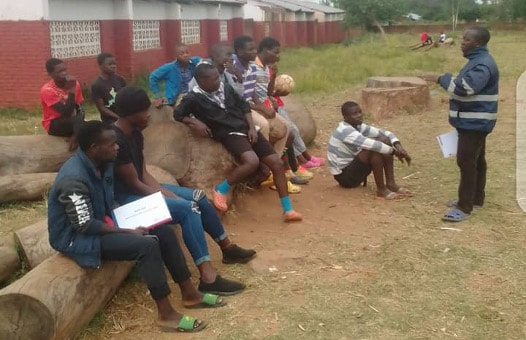Written by CorpsAfrica/Malawi Volunteer Ms. Witness Chawinga
A child’s quality education is every parent’s dream. Parents are happy when their children perform well at school. A lot of organisations nowadays are advocating for girls’ education. One way of achieving this has been to encourage girls/women to go back to school even after giving birth. This is usually supported by a quote that says, “When you educate a girl you educate a nation.” This is good, but what is the motive behind all this? And what about a boy child? Are we not the same people who are advocating for youth empowerment? How are we empowering the youths without including boys’ education?
I started asking myself these questions after my first meeting as a CorpsAfrica Volunteer. This meeting was organized by a certain organization that is working with people in my community. The meeting aimed to address harmful cultural practices (specifically Initiation ceremonies) that encourage Gender-Based Violence and violence among youths in the community. Among the issues raised was education. Mr. Banda (Not his real name), who is the Operations Manager for the organization, was the one facilitating the meeting. In the course of our discussion, he encouraged two boys who were just staying in the community to go back to school. He told them to meet him another day to discuss the way forward. After a few days, the two boys went to meet with him. ‘Wow! Interesting,’ I thought to myself. Interesting in the sense that, I am used to seeing and hearing a girl child being encouraged to go back to school. This was different.
Later on, I had a conversation with Mr. Banda and learned that he has been doing a “Back to School” campaign that included both boys and girls. I asked why he chose to include boys in the campaign when a majority of individuals and organizations are focusing on a girl child. With so much passion, he said he has a genuine concern for others. He further explained that he has always felt sorry seeing children/youths not going to school. In his approach, he sits down with those youths and tries to understand why they are not in school. In most cases, he discovered that these children/youths lack support and motivation from their parents. He has so far managed to put 15 boys and 20 girls back in school. There is so much to learn from him: his passion for youth empowerment, community development, and improved livelihood for everyone.
It is good that we advocate for a girl child’s education, but let’s not leave the boy child behind. The boy child also needs attention, support, and motivation. If we don’t address these issues with care, our effort will be fruitless. ‘He for She’ should be our fight. Together we can empower the girl child. To achieve Youth Empowerment, the boys’ education must be supported.


